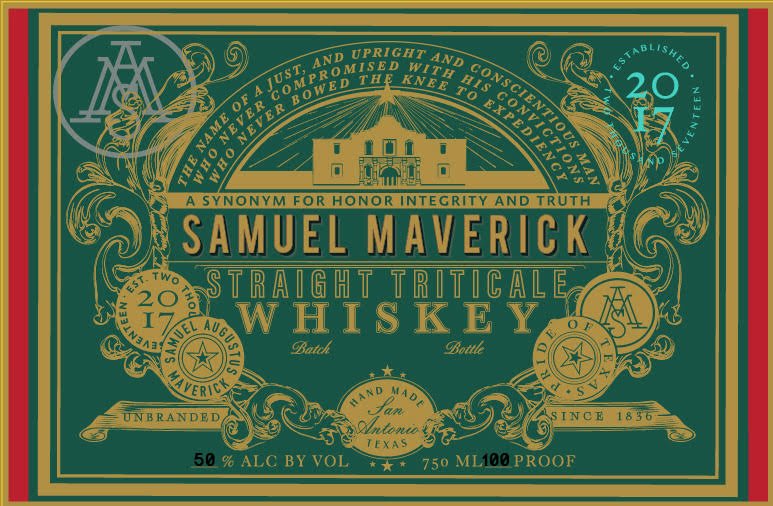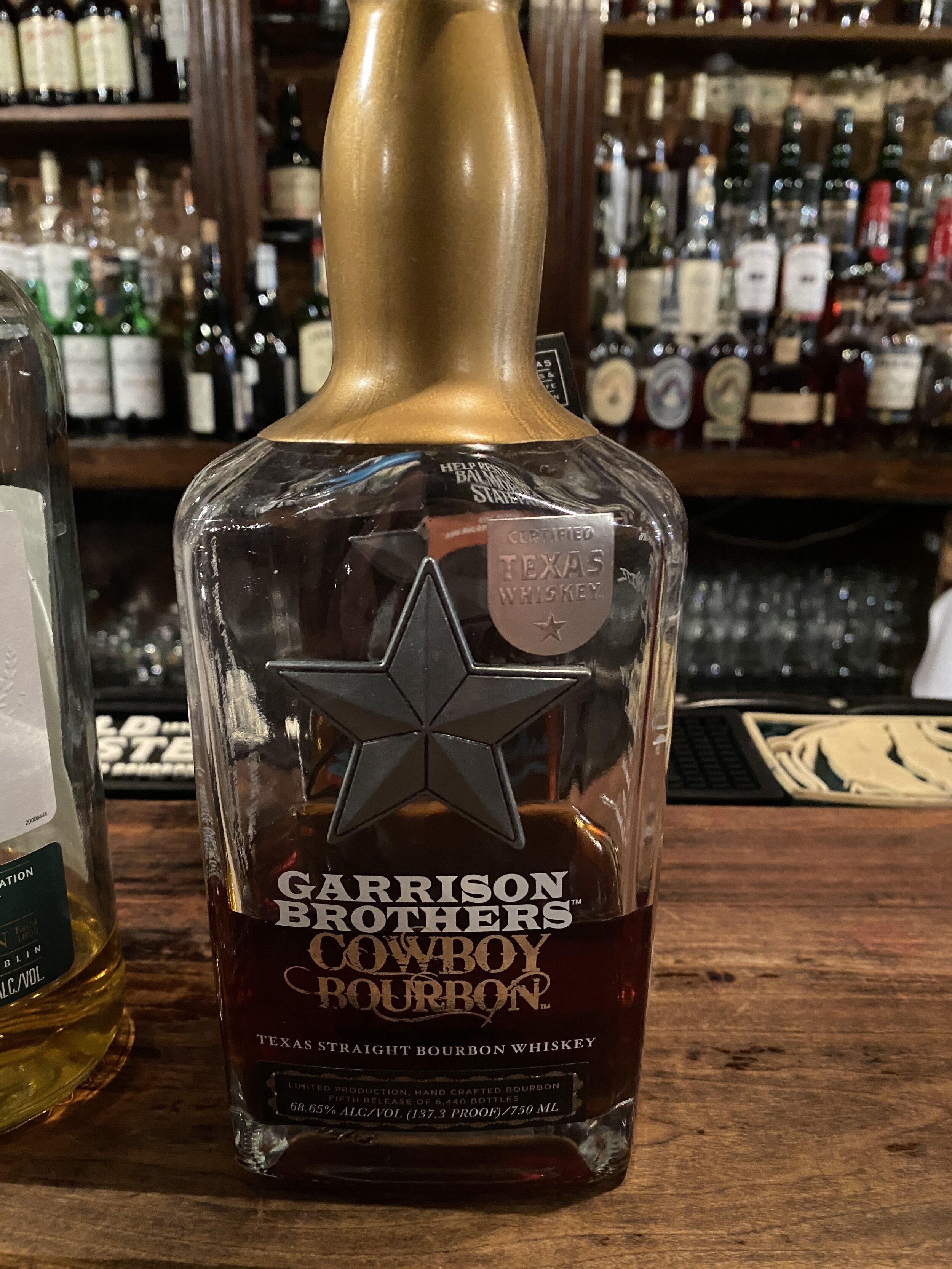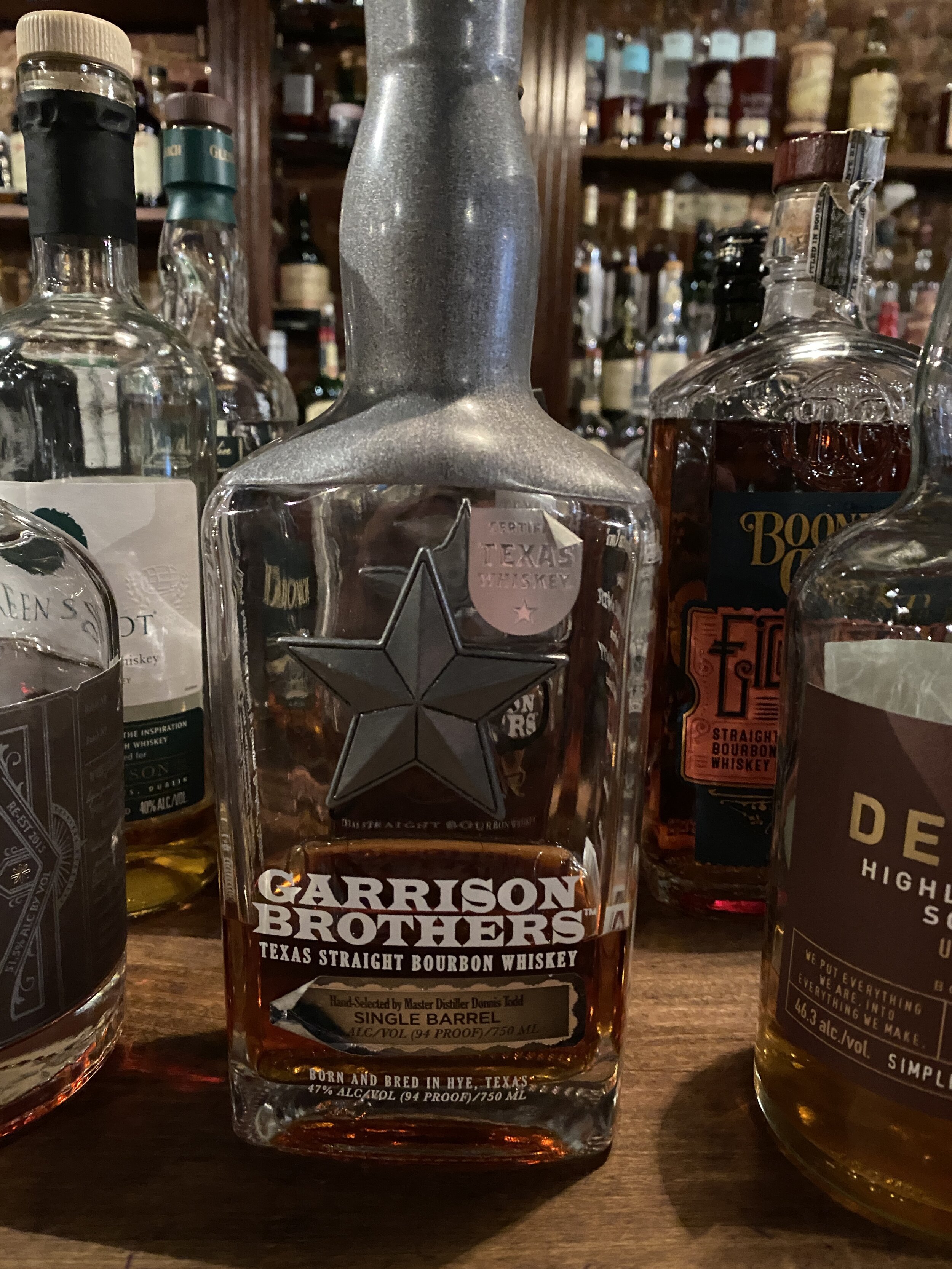Samuel Maverick Straight Triticale Whiskey
As discussed in the Samuel Maverick Private Reserve Straight Bourbon Whiskey review, the Mavericks have an unusually storied and proven history in San Antonio, one that includes an eight-generation distilling tradition (in reality it may have skipped some generations, but from end-to-end it’s eight generations).
With that said, it’s funny to me that one of their products isn’t the result of that tradition, but of an accident at the maltster. Dr. Ken Maverick and his team were distilling a batch of their Samuel Maverick Straight Rye Whiskey and noticed that the mash wasn’t behaving like it normally would. And I love that - never get so far from your distilling process that you can’t notice when something is obviously off.
Turns out, the maltster had erroneously sent triticale (a mistake the maltster readily admitted when they found it, to their credit). Not wanting to waste the already in-process batch, Maverick distilled it and barreled it. Happily, two years later, the results were good enough to bottle and they did just that under the title Triticale Whiskey.
Triticale is an interesting grain. A purposefully-bred hybrid of rye (Latin name secale) and wheat (Latin name triticum), triticale was bred to get the hardiness of rye with the easy growth of wheat. Most of it is used for animal feed and it has never taken off as a popular grain for human consumption, but a few distillers have experimented with it, notably Dry Fly Distilling, the Distillarium, Adrift Distillers, and, for one release, Jim Beam.
The results have been mixed at best. There’s a notable difference - you’ll be sure it isn’t exactly rye or wheat - but that difference isn’t always handled well. Also consider this: triticale is marginally more expensive than its parent grains, it’s not in short supply, so other distilleries could easily take a gander on it if they wanted. If we put aside lack of demand, there’s a more important reason: a grain bred for feed will have a high protein content and, thus, lower starch content. Less starch (sugar) means less alcohol and lower yields. Higher protein grains are also more difficult to ferment, mash, and distill by nature of proteins not being broken down by heat as easily as starch is by enzymes.
It did make me wonder - has anyone done a wheated rye? A deconstruction of triticale, if you will. That could be an interesting comparison - a triticale whiskey against a wheated rye using its components.
For Maverick, their Straight Triticale Whiskey was intriguing. Instead of blending the two flavors, it seemed instead to highlight the core of each. The rye was heavy on the caraway, in an almost aquavit kind of way (or, if you prefer, Jewish seeded rye bread). The wheat was soft and caramel-y, but had more strength than a typical wheat whiskey would have. It was to be a one-off, but it ended up tasting so good that Maverick contracted a farmer this year to grow 60,000 pounds (30 tons) for them to distill. Give it a few more years, and you’ll have plenty to try for yourself!
Thank you to Maverick Distilling for providing this sample free of editorial constraint.
Samuel Maverick Straight Triticale Whiskey: Specs
Classification: Texas Straight Triticale Whiskey
Origin: Samuel Maverick Distillery
Mashbill: TBD
Proof: 90 (45% ABV)
Age: 2 Years Old
Location: Texas, United States
Samuel Maverick Straight Triticale Whiskey Price: N/A - Unavailable Until ~2025
No Official Website
Samuel Maverick Straight Triticale Whiskey: Tasting Notes
Eye: Brilliant amber. Medium bleeding rims and medium heft legs.
Nose: Grain-forward up top, perhaps more so on the rye than on the wheat. Light caraway notes joined by caramelizing and toasting wheat berries. The rye side intensifies with air as the wheat fades on the nose.
Palate: Wheat caramel sweetness, more present than in the nose, though the rye is no less dominant. Caraway grows stronger still, like a wheat bread crust with caraway seeds embedded into it. Mouthfeel is a little thin, but has bite on the tip of my tongue. Oily, cinnamon- and clove-forward under the tongue as some oak shows up late.
Finish: Medium length, fades quickly into baking spices and custard as the grain remains foremost.
Overall: The rye remains dominant throughout, though the caraway freshness is delightful and unusual. This doesn’t taste young - but I also wouldn’t mind a little more age to bolster the mouthfeel (though some more proof could also do that, perhaps). There’s enough wheat to balance out the caraway. Fascinated to see where this goes when the next (intentional!) batch is aged.
Final Rating: 6.4
10 | Insurpassable | Nothing Else Comes Close
9 | Incredible | Extraordinary
8 | Excellent | Exceptional
7 | Great | Well above average
6 | Very Good | Better than average
5 | Good | Good, solid, ordinary
4 | Has promise but needs work
1-3 | Let’s have a conversation









